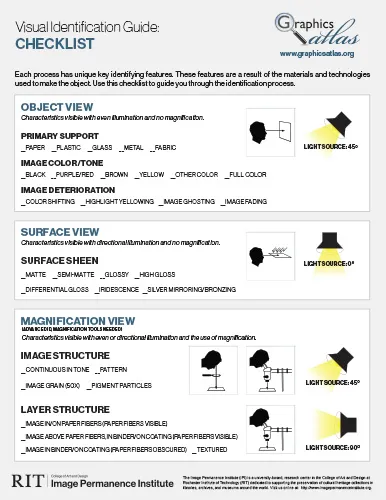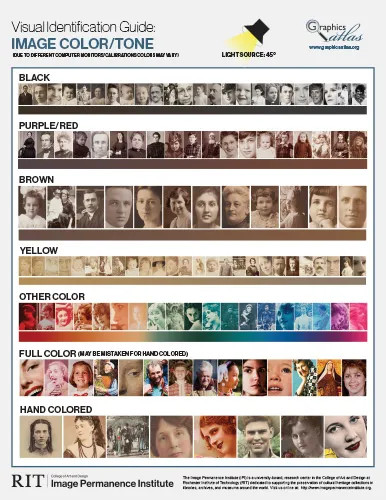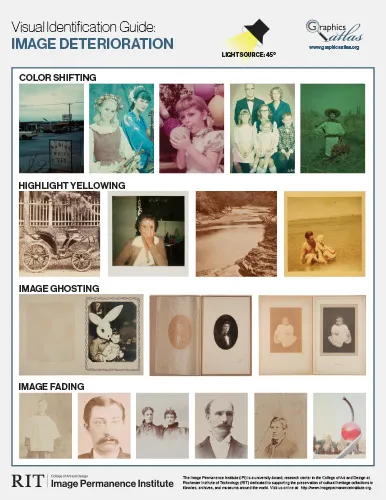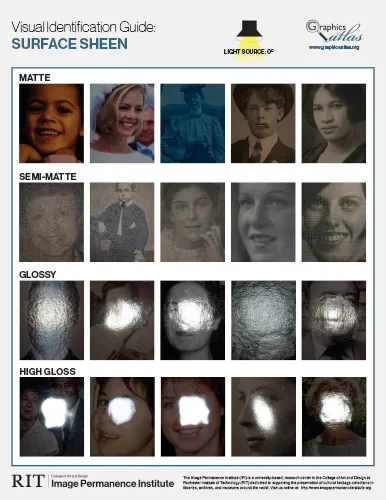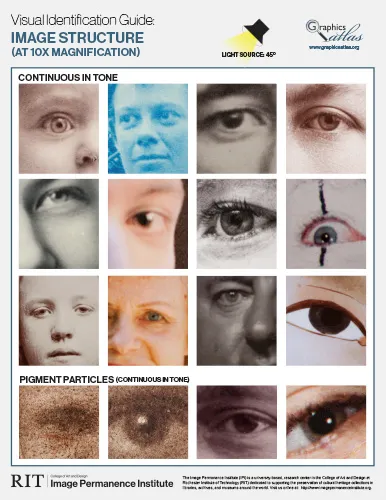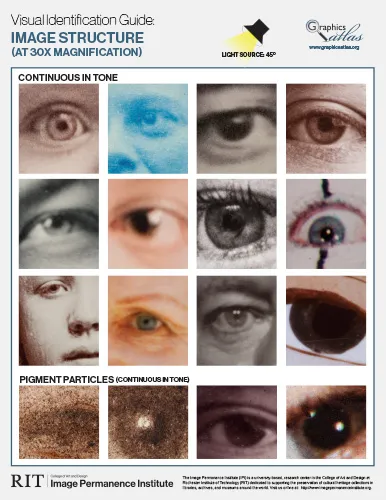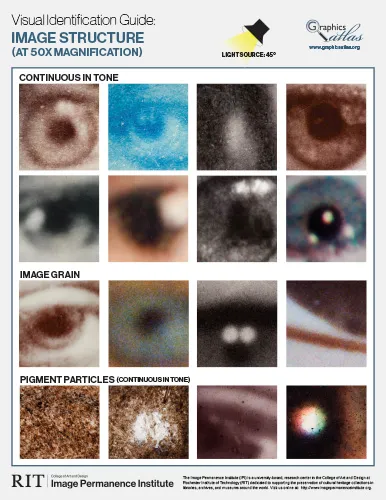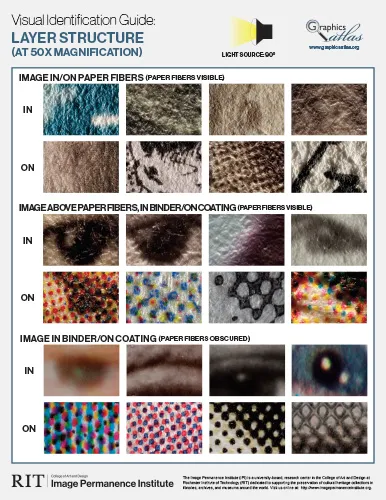Photographic Print Preservation

Photographic Print Preservation
- RIT/
- Image Permanence Institute/
- Research/
- Photographic Print Preservation
IPI was started in the mid-1980s when members of the Society of Photographic Scientists and Engineers (SPSE) – today the Society for Imaging Science and Technology (IS&T) – discussed the need for an independent research laboratory that could objectively investigate the permanence and preservation needs of imaging technologies from various manufacturers. Among the advocates for this new research laboratory were Eastman Kodak Company representatives based in Rochester, NY. These individuals suggested SPSE partner with Rochester Institute of Technology to create a jointly sponsored laboratory. RIT agreed to the collaborative effort, acknowledging it was a good fit for what was then the School of Photographic Arts and Sciences, and the Image Permanence Institute was formally founded in December of 1985.
The material nature, identification, stability, and long-term care of photographic prints has always been an area of expertise at IPI. Process identification is the first step in understanding and informing the preservation, access, and use of photographic print collections and IPI has a long history of training professionals in process identification through seminars, workshops, webinars, and print and online resources. Current research is primarily disseminated through Graphics Atlas, a sophisticated web resource that presents a unique, object-based approach to the identification and characterization of prints and photographs.
191k
Graphics Atlas Users
Graphics Atlas is used around the world on all inhabited continents in more than 124 countries.
1375
Linear Feet of Collection
IPI's study collection includes photographic and print processes produced from the 13th century to the present.
200x
Magnification
Graphics Atlas is the only resource that provides cross section photomicrographs of more than 38 image making processes at 200x magnification.
Resources
Graphics Atlas
Graphics Atlas is a sophisticated web resource that presents a unique, object-based approach to the identification and characterization of prints and photographs. This resource is designed to provide collection identification and management information to archivists, curators, historians, collectors, conservators, educators, and the general public.
Photographic Print Identification and Preservation Workshop
IPI provides a holistic approach to image-based print process identification by examining the intertwined relationships between print technologies, aesthetics, and use. Photographic, photomechanical, and digital prints are made of a wide variety of materials including plastics, papers, glass, metals, pigments, dyes, and organic substances like gelatin, albumen and polymers. IPI offers workshops that teach participants to identify every mainstream image-based print process, from the daguerreotype to the inkjet print, via the study of their component materials, structures, aesthetics, and historical and cultural uses.
Visual Identification Guides
Visual Identification Guide Checklist
Visual Identification Guide Image Color/Tone
Visual Identification Guide Image Deterioration
Visual Identification Guide Surface Sheen
Visual Identification Guide Image Structure (At 10x Magnification)
Visual Identification Guide Image Structure (At 30x Magnification)
Visual Identification Guide Image Structure (At 50x Magnification)
Visual Identification Guide Layer Structure (At 50x Magnification)








